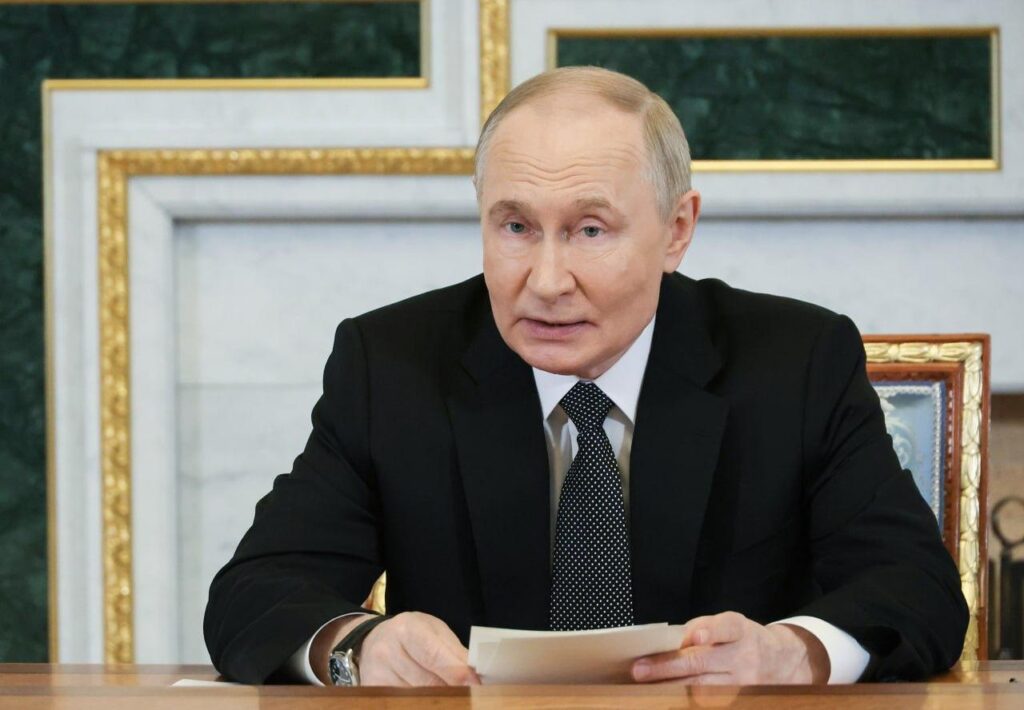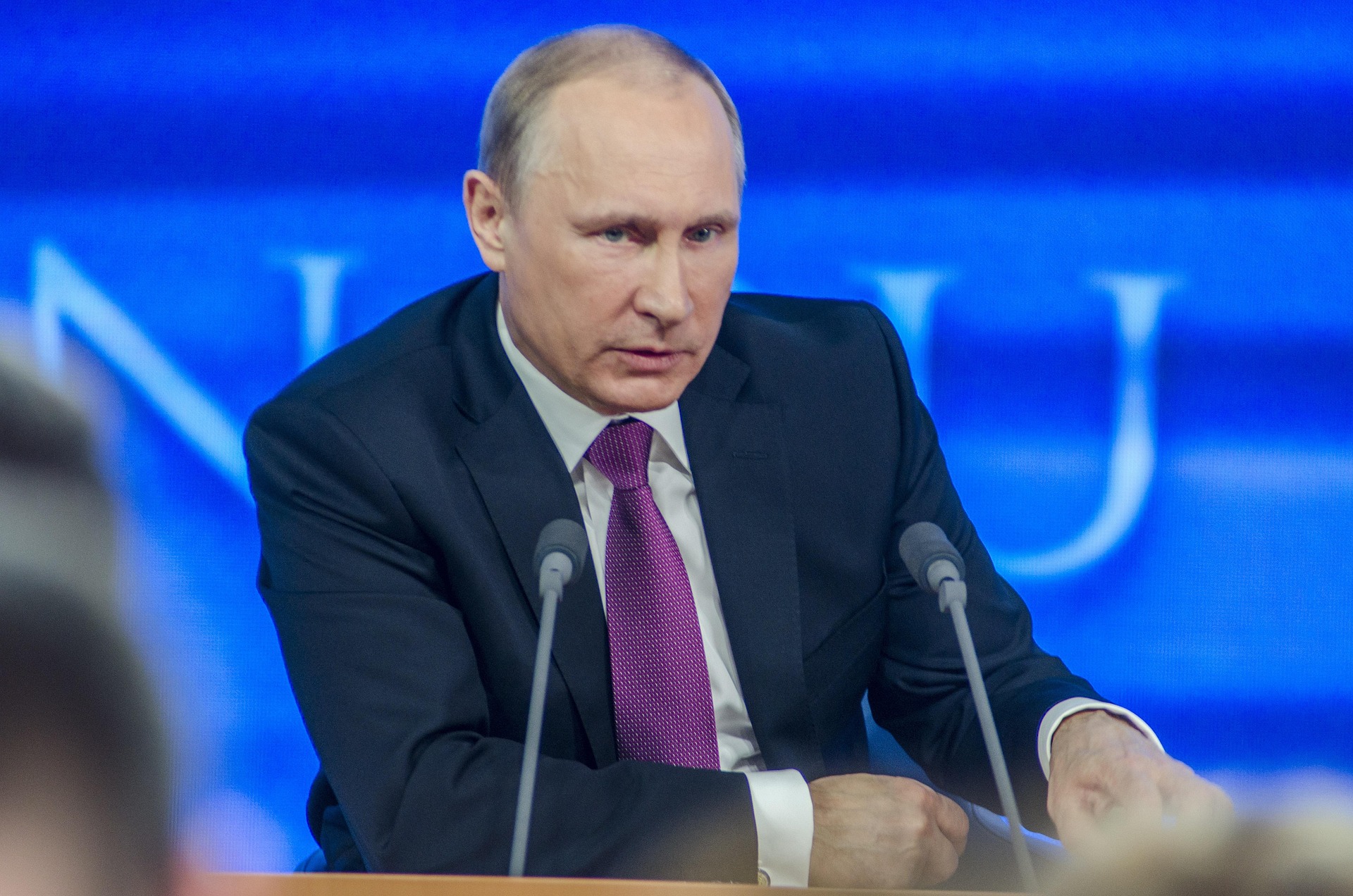Vladimir Putin’s journey from a KGB intelligence officer to becoming Russia’s longest-serving president is a story of power, strategy, and resilience. His rise through the political ranks, consolidation of authority, and ability to navigate global challenges have shaped modern Russia’s identity and foreign policy. This blog explores Putin’s early life, his career in the Soviet intelligence service, his path to the Kremlin, and how he has maintained his grip on power for over two decades, making him one of the most influential leaders of the 21st century.
Vladimir Putin: From a KGB Spy to Russia’s Longest-Serving President
When World War II ended in 1945, the world believed it had learned its lesson—the destruction and horror of global conflict could never again be the solution to disputes. To prevent any nation from overpowering another, institutions like the United Nations were established. The hope was that humankind had finally secured peace from large-scale wars. Yet, in the 21st century, the ongoing Russia-Ukraine war has shattered that belief. Despite sanctions, threats, and condemnation from Western powers, Russian President Vladimir Putin has shown unflinching determination, continuing his campaign in Ukraine since February 2022.
The world today is divided over Vladimir Putin. Some view him as an aggressive dictator destroying a neighboring country, while others consider him Russia’s most committed and progressive leader in decades. But beyond the headlines, very few know the story of Putin’s journey—from a poor childhood in Soviet Russia to becoming the longest-serving leader of modern Russia. This is the story of Vladimir Vladimirovich Putin: the boy who wanted to be a spy and ended up becoming one of the most influential and controversial leaders in the world.
Early Life in War-Torn Leningrad
Vladimir Putin was born on October 7, 1952, in Leningrad (now St. Petersburg), a city devastated during World War II. The German army had laid siege to the city for 872 days, killing over 800,000 civilians through bombings, starvation, and disease. Putin’s own family bore the scars of war. His father, Spiridonovich Putin, served in the Soviet Navy, while his mother, Maria Ivanovna Shelomova, worked in a factory. Before Vladimir Putin’s birth, his two elder brothers had died—one in the 1930s, and the other during the famine that followed the German siege in 1942.
The Putin family lived in dire poverty in a crumbling communal apartment. As a boy, Vladimir often spent time outside fighting off rats. Growing up in such harsh conditions taught him resilience and survival instincts, qualities that would later define his political career. Against his parents’ wishes, young Putin began training in judo, eventually mastering it along with wrestling and horse riding. His physical discipline was matched by intellectual curiosity—he read Marxist theory and enjoyed Soviet cinema.
One particular spy film left a deep impact on him, inspiring his childhood dream of becoming an intelligence officer. By ninth grade, he had already approached the Soviet spy agency, the KGB, seeking to join. He was told that a law degree was required, so he enrolled in Leningrad State University’s law faculty in 1970.
The KGB Years: A Spy in East Germany
In 1975, after completing his law degree, Vladimir Putin officially joined the KGB. For the next decade, he served mostly in his hometown, before being sent in 1985 to Dresden, East Germany, as a translator and intelligence officer.
At that time, Germany was divided between the U.S.-influenced West and the Soviet-controlled East. Putin worked closely with East Germany’s infamous secret police, the Stasi, monitoring political dissidents and NATO operations. His role expanded quickly, and he soon oversaw recruitments and intelligence missions.
But history was changing. On November 9, 1989, the Berlin Wall fell, signaling the collapse of Soviet control in Eastern Europe. Putin was stationed in Dresden during this pivotal moment. As angry mobs stormed his KGB office, Putin called Moscow for reinforcements. The answer shocked him: “We cannot do anything without orders from Moscow.” That night, Putin confronted the mob alone, threatening that his guards would open fire if anyone advanced. His confidence dispersed the crowd, but the incident left him disillusioned. For the first time, he realized Moscow’s leaders had abandoned even their most loyal servants.
The collapse of the Soviet Union in 1991 marked another turning point. Disillusioned and out of active service, Putin retired from the KGB as a lieutenant colonel and returned to St. Petersburg.
From Bureaucrat to Politician
Back in his hometown, Vladimir Putin worked at Leningrad State University and soon caught the attention of Anatoly Sobchak, the city’s first democratically elected mayor. Sobchak, impressed by Putin’s discipline and organizational skills, made him an advisor and later deputy mayor. Putin’s reputation as an efficient, corruption-fighting administrator grew.
However, in 1996 Sobchak lost re-election, and with him, Putin also lost his position. By then, though, Putin had developed important connections in Moscow. He moved to the capital, where he quickly climbed the political ladder. In 1997, President Boris Yeltsin appointed him as deputy chief of the presidential staff.
Yeltsin, increasingly unpopular due to corruption scandals and his public alcoholism, began relying heavily on Putin’s decisiveness. By 1998, Putin had become the head of the Federal Security Service (FSB), the successor of the KGB. In 1999, he was appointed Prime Minister of Russia.
The Chechen War and Rise to Presidency
Russia in the late 1990s was plagued by instability. The breakaway region of Chechnya was engulfed in insurgency, and terror attacks in Moscow and other cities killed hundreds. In August 1999, after a series of bombings that killed over 300 people, Putin ordered a full-scale military offensive in Chechnya. The brutal campaign, known as the Second Chechen War, left over 80,000 people dead but restored Moscow’s control.
This tough response transformed Vladimir Putin’s image into that of a strong, decisive leader. Russians, tired of chaos and humiliation after the Soviet collapse, began seeing him as a national savior. On December 31, 1999, Yeltsin unexpectedly resigned, handing the presidency to Putin.
In March 2000, Putin officially won the presidential election with 53% of the vote.
Putin’s Consolidation of Power
As president, Vladimir Putin promised to stabilize Russia. The early 2000s saw rising oil prices, which fueled Russia’s economic boom. Poverty declined, incomes rose, and corruption was curbed—at least temporarily. Russians credited Putin for their improved living standards. His popularity soared, and in the 2004 elections, he was re-elected with 71% of the vote.
But the Russian constitution limited presidents to two consecutive terms. In 2008, instead of stepping aside permanently, Putin orchestrated a masterstroke. He backed his loyal ally Dmitry Medvedev as president while taking the role of prime minister himself. Soon after, constitutional changes extended presidential terms from 4 to 6 years. In 2012, Putin returned to the presidency, winning again despite protests from opposition groups. He was re-elected in 2018, extending his rule further.
A Ruler Beyond Challenge
Under Vladimir Putin, Russia became increasingly authoritarian. Oligarchs who opposed him were jailed or exiled. Business tycoon Mikhail Khodorkovsky, once Russia’s richest man, was imprisoned on fraud charges after defying Putin. Independent journalists, like Anna Politkovskaya, who reported on human rights abuses in Chechnya, were assassinated.

Internationally, Vladimir Putin showed no hesitation in using military power. In 2008, Russia invaded Georgia. In 2014, Russia annexed Crimea from Ukraine, sparking global condemnation. In 2022, Putin launched a full-scale invasion of Ukraine, plunging Europe into its biggest war since World War II.
Even challenges from within were crushed. In 2023, Yevgeny Prigozhin, head of the Wagner mercenary group, staged a short-lived rebellion. Although he later reconciled with Putin, Prigozhin died two months later in a suspicious plane crash, widely believed to have been orchestrated by the Kremlin.
The Legacy of Vladimir Putin
Today, Vladimir Putin is Russia’s longest-serving leader since Joseph Stalin. To his supporters, he restored Russian pride, rebuilt its economy, and reasserted its power on the world stage. To his critics, he is a ruthless autocrat who silences dissent, undermines democracy, and wages aggressive wars.
What cannot be denied is that Putin’s life has been shaped by survival, discipline, and an unwavering belief in strength. From a poor boy in Leningrad who fought rats in the courtyard, to a KGB spy in East Germany, to the most powerful man in Russia—Putin’s story is one of relentless ambition and unshakable will.
As the Russia-Ukraine war rages on, the world continues to grapple with the consequences of his leadership. Whether seen as a hero defending Russia’s sovereignty or a dictator dragging Europe into chaos, Vladimir Putin remains one of the most polarizing figures of the 21st century.

